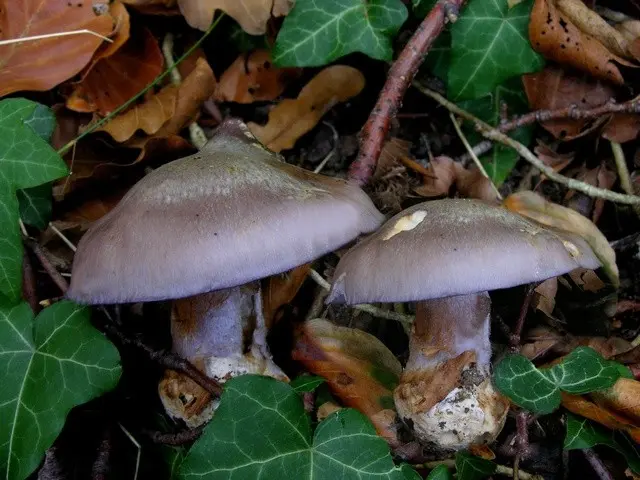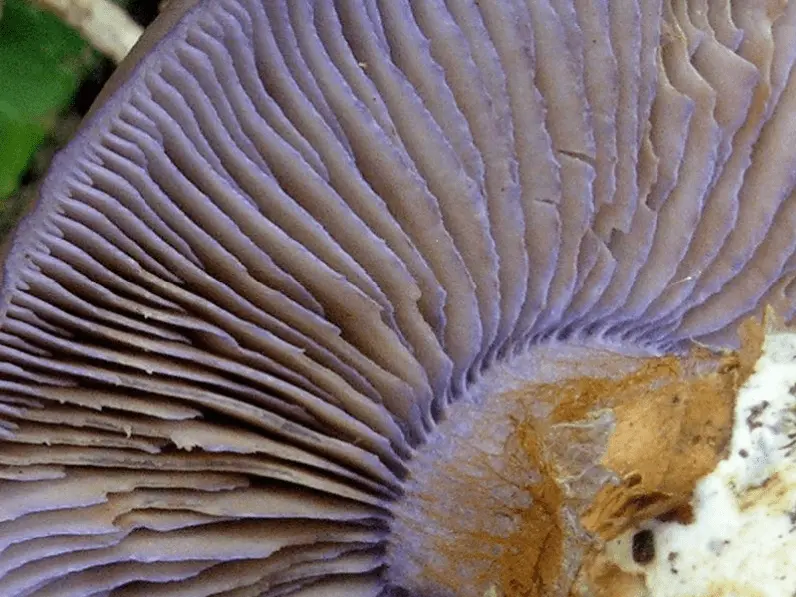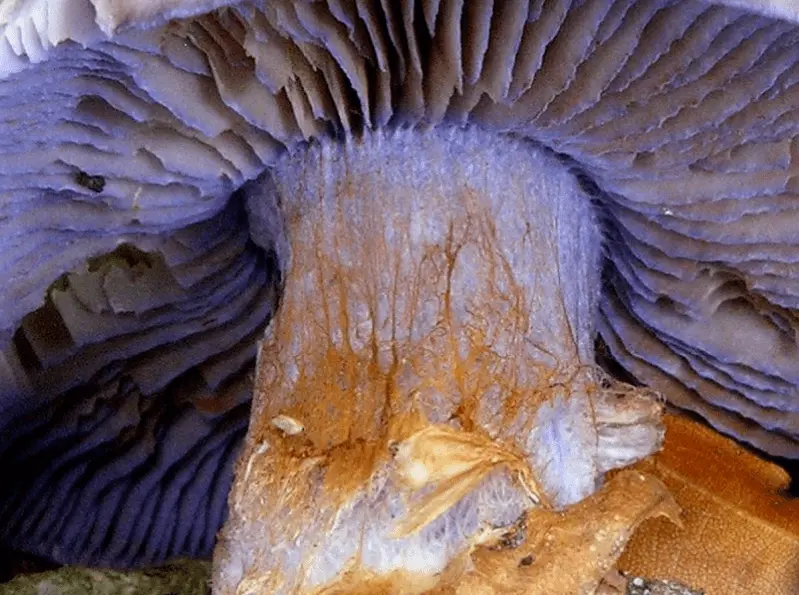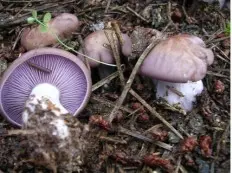Contents
Cobweb lepistoides (Cortinarius lepistoides)
- Division: Basidiomycota (Basidiomycetes)
- Subdivision: Agaricomycotina (Agaricomycetes)
- Class: Agaricomycetes (Agaricomycetes)
- Subclass: Agaricomycetidae (Agaricomycetes)
- Order: Agaricales (Agaric or Lamellar)
- Family: Cortinariaceae (Spiderwebs)
- Genus: Cortinarius (Spiderweb)
- Type: Cortinarius lepistoides

Current title – Cortinarius lepistoides TS Jeppesen & Frøslev (2009) [2008], Mycotaxon, 106, p. 474.
According to the intrageneric classification, Cortinarius lepistoides is included in:
- Subspecies: Phlegmatic
- Section: The blue ones
The cobweb received the specific epithet “lepistoides” from the name of the genus of mushrooms Lepista (“lepista”) because of the external resemblance to the purple row (Lepista nuda).
head 3–7 cm in diameter, hemispherical, convex, then prostrate, blue-violet to dark violet-gray, with radial hygrophan streaks when young, soon becoming grayish with a darker gray-brown center, often with “rusty” spots on the surface , with or without very thin, frost-like remnants of the bedspread; under adhering grass, leaves, etc., the cap becomes yellow-brown.

Records grayish, blue-violet, then rusty, with a distinct purple edge.

Leg 4–6 x 0,8–1,5 cm, cylindrical, blue-violet, whitish in the lower part with time, at the base has a tuber with clearly demarcated edges (up to 2,5 cm in diameter), covered with blue-violet remains of the bedspread on the edge.

Pulp whitish, at first bluish, bluish-gray in the stem, but soon becomes whitish, slightly yellowish in the tuber.
Smell bland or described as earthy, honeyed or slightly malty.
Taste unexpressed or soft, sweet.
Споры 8,5–10 (11) x 5–6 µm, lemon-shaped, distinctly and densely warty.
KOH on the surface of the cap, according to various sources, is reddish-brown or yellow-brown, slightly weaker on the pulp of the stem and tuber.
This rare species grows in deciduous forests, under beech, oak and possibly hazel, on limestone or clay soils, in September-October.
Inedible.

Purple Row (Lepista nuda)
– differs by the absence of a cobweb bedspread, light spore powder, pleasant fruity smell; its flesh on the cut does not change color.

Crimson cobweb (Cortinarius purpurascens)
– larger, sometimes with reddish or olive tones in the color of the cap; differs in staining of the plates, pulp and legs of the fruiting body in case of damage in purple or even purple-reddish color; grows on acidic soils, tends to coniferous trees.
Cortinarius camptoros – characterized by an olive-brown hat with a yellow or red-brown tint without purple tones, which is often two-tone with a hygrofan external part; the edge of the plates is not blue, it grows mainly under lindens.
Weedy blue curtain – a very rare species, found in the same habitats, under beeches and oaks on limestone soils; distinguished by an ocher-yellow hat with an olive tint, which often acquires a two-color zonality; the edge of the plates is also distinctly blue-violet.
Imperial curtain – differs in a cap in light brown tones, paler flesh, a pronounced unpleasant odor and a different reaction to alkali on the surface of the cap.
Other cobwebs may be similar, having purple hues in the color of the fruiting bodies in their youth.
Photo by Biopix: JC Schou









